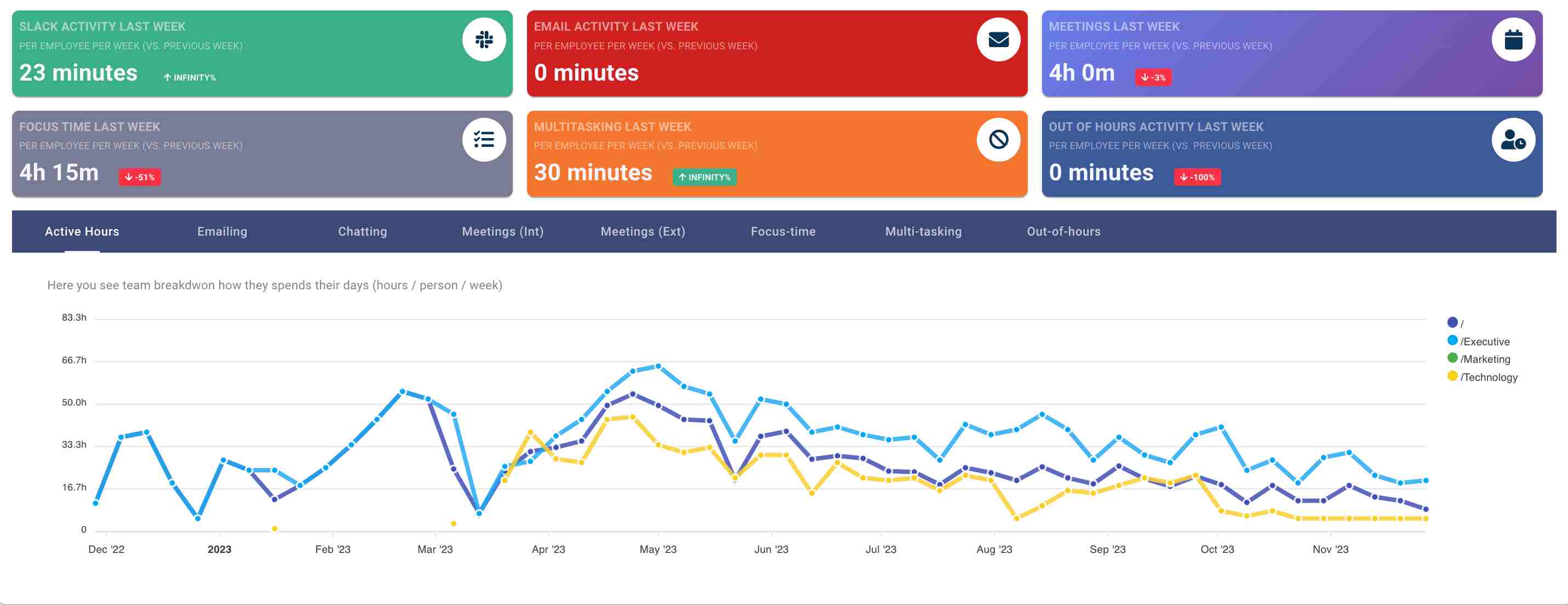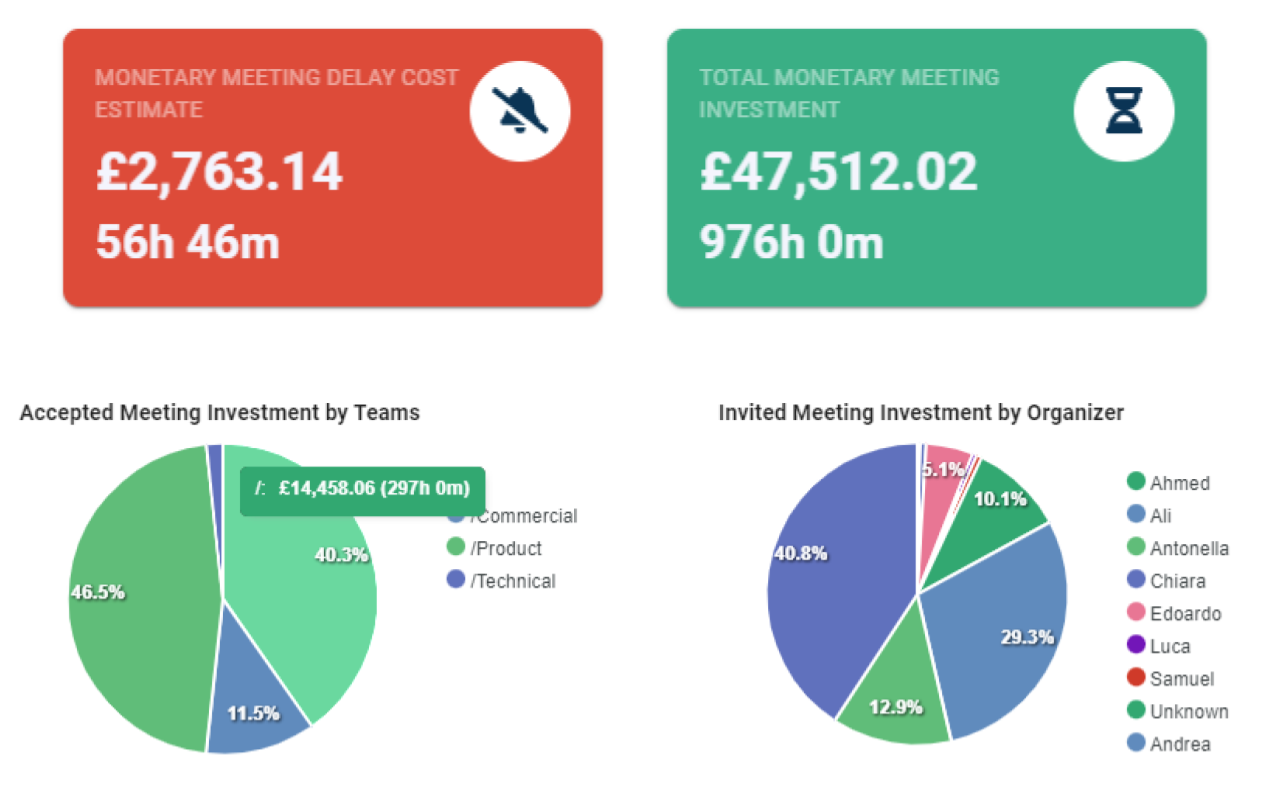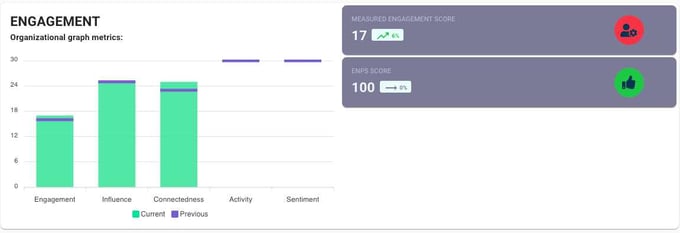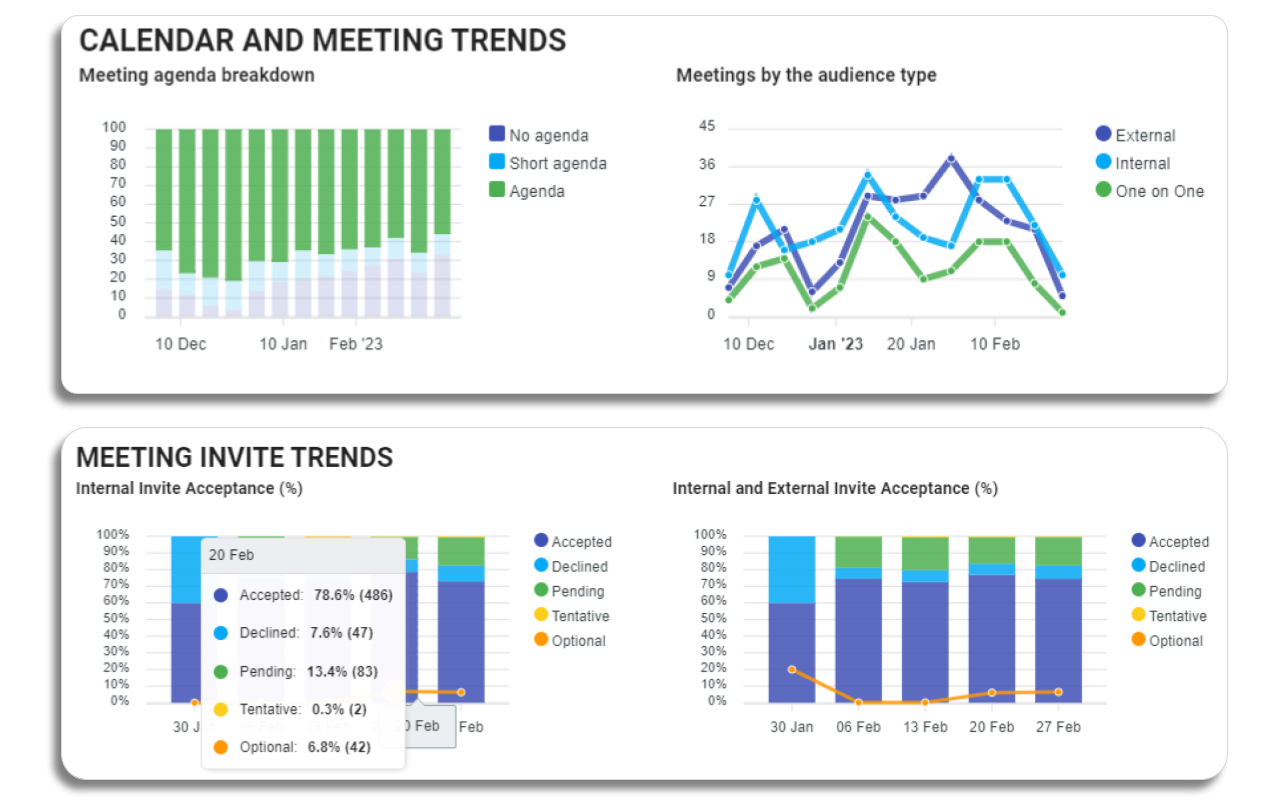How to Have Less Meetings: Strategies for a More Productive Workplace
Have less meetings and boost productivity in the workplace. Learn how to identify unnecessary meetings, implement alternatives, and maximize...
Reducing meetings improve productivity by 35% according to latest research. Discover the business impact, employee benefits, and implementation strategies.
Meetings have become a routine element of daily professional life. Ranging from quick check-ins to extensive strategic planning sessions, they are a fundamental component of business communication and collaboration. However, with this comes the potential pitfall of meeting overload – a scenario where the quantity of meetings begins to impede rather than facilitate productivity. This phenomenon of meeting overload poses various challenges and begs the question, why is it important to reduce meetings?
While meetings are intended to streamline processes, enhance communication, and foster teamwork, an excessive number can have the opposite effect. They can consume valuable time that could otherwise be spent on focused, individual work or more pressing tasks. The goal is simple: make meetings count or don't have them at all.
Excessive meetings have become a significant concern in the modern workplace, primarily due to their impact on individual and team productivity. While meetings are essential for collaboration and decision-making, an overabundance can lead to diminished work output and efficiency. Meeting fatigue is real: when you spend all day talking about work instead of doing it.

Statistics have shown a direct correlation between the time spent in meetings and overall productivity - For example, a study by Atlassian revealed that the average employee spends about 31 hours each month in unproductive meetings. This substantial amount of time, when considered alongside the regular workload, can lead to longer working hours and reduced efficiency.
The time spent in these meetings often involves discussions that could have been communicated effectively through other means, such as email or collaborative tools.
Also, the cognitive load of continuous meetings can be draining. It leaves less mental capacity for employees to engage in deep, focused work, which is essential for creativity and problem-solving. This is particularly impactful for roles that require significant concentration or creative thinking.
The impact extends beyond individual productivity; team dynamics can also suffer. Constant meetings kill momentum. Projects stall when people can't focus long enough to finish anything.
The shift to hybrid work has intensified meeting proliferation exponentially. Remote employees now attend 50% more meetings than their office counterparts, with 86% of meetings including at least one remote participant. This "meeting stacking" phenomenon creates back-to-back video calls with no transition time, amplifying meeting fatigue beyond pre-pandemic levels. Microsoft data shows meetings after 8 PM are up 16% year-over-year, proving that hybrid work's "flexibility" often translates to longer, more fragmented workdays, and poor management practices.
Meetings are expensive. Really expensive. When meetings are unproductive or unnecessarily frequent, they represent not just a loss in time, but also a substantial financial cost.

Recent 2024 data shows the financial devastation has worsened: meetings now cost the US economy an estimated $532 billion per year, with employees spending 392 hours per year in unproductive meetings. Companies spend an average of $29,000 annually on meeting costs per employee, making meeting optimization a critical business imperative rather than a nice-to-have.
The cost of meetings isn’t limited to the hours spent in the meeting room alone. It encompasses the preparation time, the follow-up actions, and the opportunity cost of what employees could have achieved had they been engaged in their primary job functions. For example, for a high-level executive whose hour might be valued at a significant rate, a one-hour meeting does not just cost the hour itself, but also the strategic opportunities lost during this time.
In addition, the cumulative effect of meetings on employee productivity and morale can indirectly affect business outcomes. Reduced productivity can lead to delayed project timelines, decreased quality of work, and in some cases, increased employee turnover, all of which have associated financial costs.
Too many meetings make people miserable at work. A high frequency of meetings, especially if perceived as unproductive or unnecessary, can lead to decreased morale and job satisfaction among employees. This situation is exacerbated when meetings take upon time that employees feel could be better spent on completing their actual work tasks, leading to a sense of frustration and inefficiency.

Meeting overload is closely linked to workplace stress. The pressure to prepare for, attend, and follow up on numerous meetings can be overwhelming, especially when these meetings interrupt deep work or critical thinking tasks. This constant switching of gears not only reduces productivity but also increases mental fatigue. The cumulative effect of this can be detrimental to an employee's overall well-being, leading to burnout and disengagement.
Furthermore, the quality of meetings plays a crucial role in employee perception. Meetings that lack clear objectives or outcomes can leave participants feeling that their time has been wasted. This perception undermines the value of meetings and can lead to a negative attitude towards future sessions.
On the flip side, well-planned and purposeful meetings can boost morale and engagement. When employees see that their time in meetings is being used effectively, with clear outcomes and contributions towards organizational goals, it enhances their sense of purpose and satisfaction in their role.
Recent research shows a direct link between meeting overload and decision fatigue, a psychological state where continuous decision-making depletes cognitive resources. A one study shows that judges' decision quality deteriorates throughout the day, with favorable rulings dropping from 65% to nearly zero before breaks. For executives attending an average of 23 hours of meetings per week, this cognitive depletion creates a cascade of poor strategic decisions that compound throughout the organization.
Meetings, especially when excessive or poorly structured, can lead to decision fatigue. This occurs when individuals are required to make too many decisions quickly, reducing their ability to make well-considered choices. The cognitive load of back-to-back meetings can dull critical thinking skills and the capacity to weigh options thoughtfully, leading to suboptimal decisions.
The constant interruption of meetings disrupts the flow state, a mental state where an individual is fully immersed in an activity, leading to higher productivity, creativity, and satisfaction. Creative thinking often requires long periods of undisturbed time to ponder, ideate, and innovate. Continuous meetings fragment this time, making it challenging to delve deeply into complex problems or to think creatively.

Highlighting the importance of dedicated focus time, organizations should strive to create spaces in executives’ and employees’ schedules for strategic thinking and creativity. This can involve setting aside blocks of time where individuals are free from meetings and other interruptions, allowing them to concentrate on high-level tasks and innovative thinking.
Want fewer meetings?
.png?width=680&height=383&name=Marketing%20Images%20(5).png)
Here are actionable strategies that organizations can adopt:
By implementing these strategies, organizations can significantly reduce unnecessary meetings, freeing up time for focused work and enhancing overall productivity and employee satisfaction.
When looking to reduce unnecessary meetings and enhance organizational efficiency, technology plays a key role. Modern technological tools and software are designed to streamline meeting schedules, foster effective collaboration, and ultimately minimize the need for excessive meetings.
Data-driven tools like Flowtrace offer profound insights into meeting analytics within an organization. Flowtrace analyzes meeting patterns, frequency, and participant engagement to identify inefficiencies and suggest areas for improvement. By leveraging this data, leaders can make informed decisions about which meetings are necessary and which can be shortened, combined, or even eliminated.

Flowtrace also enhances collaboration by identifying communication silos and suggesting ways to improve cross-team interactions. This helps ensure that meetings are not just about sharing information that could have been communicated through other channels but are used for meaningful collaboration and decision-making.
Then there’s the addition of a built-in meeting cost calculator which displays costs associated with meetings within calendar software, helping reduce the financial implications of meeting overload.
As we navigate 2025's AI-powered workplace, meeting reduction isn't just about efficiency, it's about survival. Companies implementing smart meeting policies report 34% productivity increases and 25% improvement in employee engagement. While 45% of employees feel overwhelmed by meetings, forward-thinking organizations use AI-powered meeting analytics to transform their meeting culture from a productivity killer into a competitive advantage.
Have less meetings and boost productivity in the workplace. Learn how to identify unnecessary meetings, implement alternatives, and maximize...
Learn how to implement essential Outlook meeting rules to enhance productivity, reduce costs, and streamline scheduling with Flowtrace's Outlook...
Optimize meeting efficiency with structured Google Calendar rules. Learn how to implement guidelines that ensure productive, time-effective meetings...